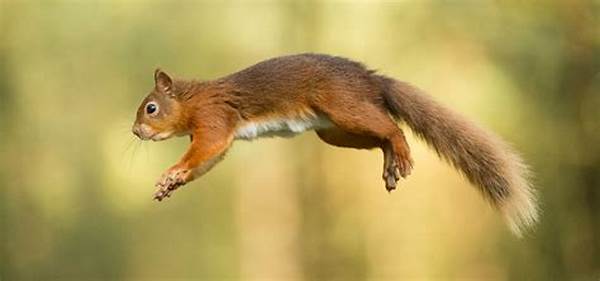Hey there, fellow wildlife photography enthusiasts! If you’re anything like me, you know the thrill of capturing that perfect moment when an eagle soars or a gazelle leaps. But let’s be honest, getting those jaw-dropping shots isn’t always a walk in the park. You need the right camera settings to make magic happen. So, let’s dive into the world of the best camera settings for wildlife action shots and ensure your next nature adventure is a photographic success!
Read Now : Professional Mobile Photo Techniques
Mastering the Basics for Amazing Shots
When it comes to wildlife action shots, your camera settings can make all the difference. First up, you’ll want to set your camera to a fast shutter speed. Wildlife doesn’t wait around for you to capture their best side, so a shutter speed of at least 1/1000th of a second will help freeze motion, ensuring you catch every flapping wing or flicking tail in crisp detail.
Next, consider your aperture. For wildlife, you often want a low f-stop, like f/4 or f/5.6, to create a beautifully blurred background that makes your subject pop. This setting draws attention to the animal while keeping distracting elements out of focus. Also, don’t forget about ISO. You might need to boost it in low-light situations to keep your shutter speed fast enough for those spontaneous wildlife movements. Balancing these settings is key to capturing the best camera settings for wildlife action shots.
Finally, if your camera has auto-focus tracking modes, use them! Wildlife can be unpredictable, and these modes help keep your subject in focus even as it moves across the frame. Practice using continuous shooting mode too, so you can take bursts of photos and pick the best action shot later. These camera settings, paired with patience and practice, will elevate your wildlife photography to new heights!
Essential Tweaks for Enhanced Captures
1. Shutter Speed Excellence – Use a minimum of 1/1000th of a second to ensure you freeze even the fastest wildlife action without blur. The best camera settings for wildlife action shots always start here.
2. Aperture Advantage – Set a low f-stop like f/4 to isolate your subject from the background. The best camera settings for wildlife action shots have that dreamy blur effect.
3. ISO Ingenuity – Adjust your ISO based on lighting, but keep it as low as possible to avoid noise. During golden hour, lower ISO can be part of the best camera settings for wildlife action shots.
4. Focus Feature – Utilize continuous autofocus to track unpredictable wildlife movements smoothly. This is essential for the best camera settings for wildlife action shots.
5. Burst Shooting – Engage continuous shooting mode to capture a series and pick the standout shot. It’s an essential part of the best camera settings for wildlife action shots.
Lighting Considerations in the Wild
Capturing wildlife means dealing with ever-changing lighting conditions. The best camera settings for wildlife action shots often need to adapt to different times of the day. Early mornings and late afternoons, known as the golden hours, provide stunning natural light. During these times, you’ll want a lower ISO and can likely use a medium shutter speed, like 1/500th of a second, due to the soft, even lighting.
On the other hand, midday sun can be harsh, casting unwanted shadows and highlights. In such situations, increase your shutter speed a bit more, and possibly your aperture, to counteract the brightness. It’s also wise to use lens hoods to minimize unwanted glare. Remember, each wildlife opportunity is unique, requiring adjustments on the fly for the best camera settings for wildlife action shots.
Pro Tip for Wildlife Enthusiasts
1. Timing is Everything – Plan your shoots during golden hours for softer light and better photos.
2. Be Patient – Sometimes you have to wait for hours to get the perfect shot. It’s all part of the experience!
3. Know Your Subject – Understanding wildlife behavior can predict movements and improve your shot chances.
4. Stay Ready – Always have your camera prepared for action.
Read Now : Minimalist Art And Negative Space
5. Blend In – Wear natural colors and remain still to avoid scaring off your subjects.
6. Go Manual – While automatic modes are convenient, manual settings offer more control over your shot.
7. Use a Tripod – For stability, especially with heavier lenses.
8. Keep It Steady – Learn to hold your camera right to reduce shake when hand-holding.
9. Weather Matters – Check conditions to be prepared for unexpected changes.
10. Practice Makes Perfect – Keep honing your skills and experimenting with different settings.
Advanced Techniques for Capturing Action
Let’s talk advanced tactics for getting those standout wildlife shots! First, you want to explore the world of back-button focusing. It frees up your shutter button while allowing you to lock onto your subject with ease. Back-button focus can help you nail the best camera settings for wildlife action shots by ensuring your focus doesn’t shift as you press the shutter.
Speaking of the shutter, experiment with panning for those captivating motion shots. Panning involves moving your camera with the subject’s motion, using a slower shutter speed, around 1/60th to 1/125th of a second. This creates a motion blur background with a clear subject—talk about dynamic imagery! These techniques, though advanced, can elevate your photography game, leading to iconic images captured with the best camera settings for wildlife action shots.
Best Camera Equipment for Stunning Wildlife Photos
Y’all know that gear counts, right? While your settings are crucial, having the right equipment makes everything smooth sailing. Opt for cameras with fast autofocus systems. These are golden for nailing the best camera settings for wildlife action shots without missing a beat. Lenses? Go for a telephoto lens, minimum 300mm. The closer you can get (without disturbing animals), the better.
Image stabilization in your lens or camera body can save your shots from being wasted due to handshakes, especially when you’re shooting at a distance. Add a sturdy tripod or monopod for extra support and you’re golden! This setup combined with the best camera settings for wildlife action shots ensure you’ll capture those jaw-dropping moments in the wild effortlessly.
Quick Summary for Aspiring Photographers
Simplifying all this info, the best camera settings for wildlife action shots require you to master a few key elements. Start with your shutter speed—a speedy 1/1000th of a second can do wonders. Next, refine your aperture to create background blur, with a lower f-stop like f/4 being ideal. Tweak your ISO for sufficient exposure without too much noise, especially in low-light environments.
Let’s not forget about focus. Continuously track your subject to maintain clarity amidst the action. Utilize burst mode to capture variations of a moment and pick the best later. These strategies, coupled with patience and awareness of your surroundings, form the backbone of getting the best camera settings for wildlife action shots. With practice, your wildlife photography will reach new, awe-inspiring heights.



